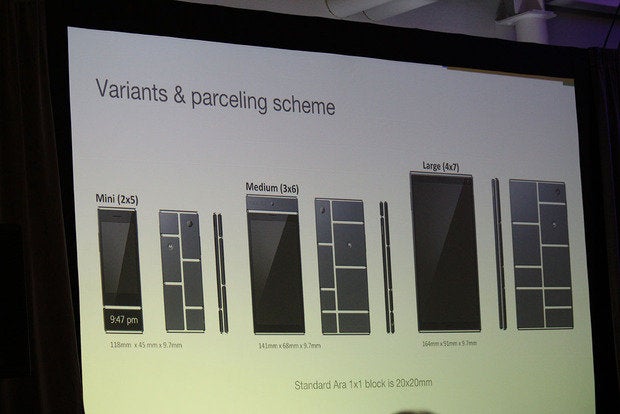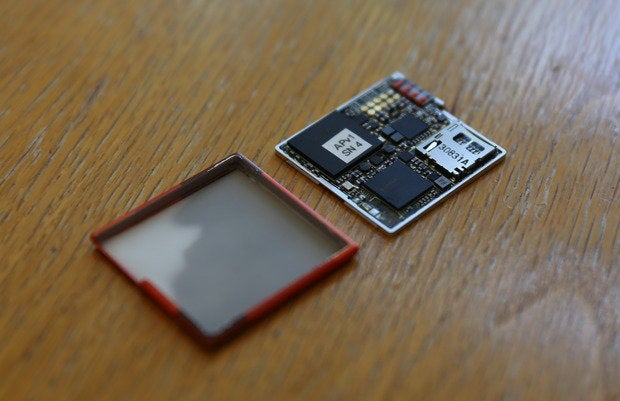has every intention of making a smartphone with customizeable, swappable hardware modules into a tangible reality, but it has some kinks to work out first.
The company thoroughly laid out plans for its modular smartphone at the oject Ara Developers Conference in Mountain View today. Even for a company as big as , the idea of a phone with swappable components is a lofty goal—especially in a mobile industry with a well-established production chain. It’ll be interesting to see if can actually disrupt that with this outlish idea, but it certainly believes it can.
“The IKEA effect”
oject head Eremenko began the conference by detailing oject Ara’s main objectives, the most interesting of which is to help spark the “IKEA effect” among smartphone users by encouraging them to essentially make their own device. “t the consumer make…changes over their own life their own evolution,” he said.
The oject Ara kit will allow users—developers, for now—to swap components into an endoskeleton framework by sliding them in from the side. The endoskeleton will accept different component modules, like a processor, display, battery, or camera, allowing users to make a phone comprised of different hardware from different vendors. The component blocks will talk to each other using the high-speed Unio communication stard, ensuring high bwidth low latency between modules. Still, bwidth latency won’t be good enough for the processor RAM to be located in different modules—those will have to be packed together, as they are in phones today. Modules are held tightly in place with electromagnets. added that this is the “first time the electropermanent magnet is used in this case.”
plans to dole out barebones kits, dubbed “Grey” phones, to interested developers. There are currently three different variants including Mini, Medium, rge. Each will accept a different number of the variable-sized blocks. For instance, the Mini phone chassis will accept four 2×1 modules two 1×1 modules. The Medium phone has room for four 2×1 modules, two 1×1 modules, two 2×2 modules, will be the “default” configuration.


Three different phone models.
Not what you’ve seen before
You’ve probably never seen a phone like this before. The initial prototypes appear blocky unrefined, but the most interesting part is how the different “blocks” will snap into the unit, which Eremenko demoed on an overhead projector.


It’s not like a phone you’ve seen before.
is proud of the industrial design of oject Ara its many available finishes, adding that while it believes it has produced a beautiful product, “It’s for the market to decide.” Eremenko wants users to think of the Ara phones as more than just custom unique, but as expressive, too. “[It’s] the kind of thing you can put on the table at dinner the first 10-15 minutes of the conversation is about the phone.”
It’s hard to gauge how much each phone would ultimately cost. Each “Grey” developer kit should have a bill-of-materials of about $50, which would usually speak to a retail price in the $100-150 range. Add-ons like the processor, -Fi block, display, camera, battery pack could bring up the cost of the phone to upwards of $600, but that’s not ‘s intention. “icing is something that’s beyond the scope of a [research–development] effort,” insisted Eremenko. “That’s a product organization question it’s dependent on geography carrier things.” He added that he expects the ecosystem to be competitive.


This is what the Application ocessor module looks like.
arning from Android
Android’s current code doesn’t support hot-swapping hardware components like this, but is working on that. “Our vision for the software architecture is a set of generic class drivers analogous to the way B is treated today,” began Eremenko. “This is potentially a great thing to happen to Android.” He went on to say that the intent is to support Android create a Unio class driver for the nux kernel so that this is possible in future iterations of the operating system.
Android does have its shortcomings, like fragmentation, which Eremenko his team are insistent on keeping at bay. A generic group of drivers would help alleviate this conundrum, help protect against future device fragmentation. “That…would be downloaded to the device, perhaps through something like ay, but that device does not have to be linked in the kernels,” imagined Eremenko. He added that aspires to bring this feature to Android by early next year.
It’s not just about a phone, it’s about an industry
Eremenko his tag team of presenters, including former Motorola designer Makoski, spent a lot of time discussing some of philosophies behind ‘s Advanced Technologies oducts (ATA group, the team behind oject Ara. It isn’t just about producing a heavily customizable, easily configurable smartphone, but to spearhead an industry. ATAhas given itself an end-goal of two years to bring this product to market. “It’s very similar to early DAR (Defense Advanced Research ojects Agency),” said Eremenko, in reference to using actual science technology to bring an idea to life, rather than simply researching it. Currently, is working with companies like Toshiba to help bring this idea to market.
The idea isn’t to bring a single phone to market, but to create stards that allow for a whole ecosystem, a whole industry of customizeable phones modules.
at’s next?
There are many hurdles to jump before oject Ara becomes a working product that normal consumers can buy, but for now is doing what it can to encourage developers to give this modular phone a try. “‘ve been waiting 20 months for this moment,” said Makoski. And now consumers will have to wait to see what the developers come up with.


















